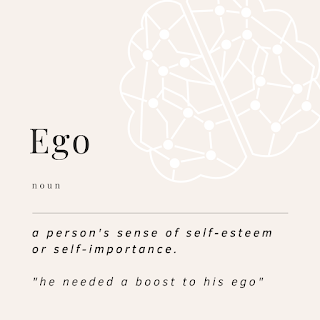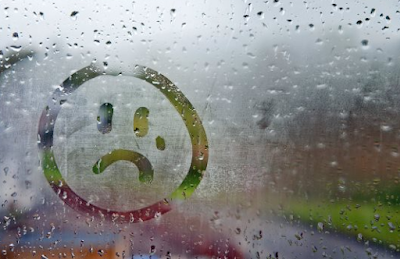SELF COMPASSION IN RECOVERY: BREAKING THE SHAME CYCLE
(*Note: I refer to substance abuse disorder (SUD), but any maladaptive behaviour (e.g., eating disorders, gambling, love and sex addiction) are interchangeable with this term)
EMOTIONAL REGULATION: THE SCIENCE BIT
Emotional regulation is central to our capacity to function successfully in the world, and has been defined as:
[…] the process by which individuals influence which emotions they have, when they have them, and how they experience and express their feelings. Emotional regulation can be automatic or controlled, conscious or unconscious, and may have effects at one or more points in the emotion producing process.
- Gross, 1998
Simply put, emotional
regulation acts as a modifier; it helps us filter the most important pieces of
information from our environment and motivates us to attend to it in a way that
won’t evoke stress or fear. ‘Easier said than done!’ I hear you all cry…
There is
hope!
First, let’s
look at the opposite of regulation, and consider emotional dysregulation
and SUDs.
Society
dictates that, as adults, we are expected to act in a manner that is socially
acceptable. When emotional control fails, we can often say or do things we
later regret and subsequently end up self-shaming ourselves for our behaviour.
Most of you will be familiar with the ‘Oh my GOD, what did I do last night?’
feeling the morning after, and the shame that follows. (Or is that just me?)
People with
SUDs may experience emotional dysregulation in adulthood for a number of
reasons (too complex to explore in detail here) that may include inadequate or
unhealthy attachments in infancy and childhood trauma. We may find that as we mature,
we develop issues such as anxiety disorders, depression, poor stress
management, inadequate interpersonal skills, and the clincher for most of us, behavioural
impulsivity, and a difficulty in delaying gratification. This unstable
behavioural control is what leads to SUD and the ever-turning shame/addiction
cycle.
Feel a
difficult emotion, delay said negative emotion with a substance or behaviour,
achieve relief for a given amount of time, feel shame as the effects wear off
and the consequences become evident, feel responsible for your behaviour and
that you are a terrible person, queue more negative emotions… and so the cycle
repeats. Add to this a healthy dose of self-isolation, resentment, self-pity,
and helplessness. Sound familiar??
This cycle
of shame and addiction only gets harder and harder to break over time, as each
time we go round, the shame and self-negativity is compounded and becomes a
learned response to negative emotions or stimuli from our environment. So how
do we start to unravel it?
SELF
COMPASSION: WE AREN’T BAD PEOPLE
If I could
break it down into a single sentence, I would explain self-compassion as being
able to recognize the difference between making a bad decision and being
a bad person.
When we
make mistakes in life, we often reach the conclusion that we are bad people,
and this is an inner shame that often dictates how we see ourselves. This is
often down to low self-esteem (often an issue for people suffering with SUD) We
often don’t have the tools to allow ourselves to take a moment to pause and
accept that all human beings make mistakes despite all best intentions, and
that it is part of the human experience.
Self-compassion
allows us to hold space to feel compassion, not only for others but for
ourselves and our own suffering and distress. Over time and with practice, we
can learn to treat ourselves with kindness, acceptance, understanding and
recognition that all humans are imperfect and make mistakes.
To drive
the point home, just because we do a bad thing, it doesn’t make us a bad person
– even good people make bad decisions from time to time. Judging ourselves
harshly is counterproductive and only serves to feed our propensity for
addiction and maladaptive behaviours.
If your compassion does not include yourself,
it is incomplete
- Buddha
It’s all very well understanding the concept of self-compassion, but how do we put it into practice?
This is the hard bit, because we have been hardwired to turn on ourselves – self-flagellation is the well-marked road we have been walking on our whole lives, and the self-compassionate route is but a tricky-to-tread muddy track.
INTO ACTION: SELF COMPASSION IN PRACTICE
I find it
helpful to break self-compassion into three steps: Acknowledgement, Acceptance
and Surrender. This might sound a bit ‘woo’ but bear with me.
Acknowledging that you are in a moment of
suffering is the first step, and not as easy as you might think. It is
essentially mindfulness and allows you to simply say to yourself ‘I feel
[insert feeling] right now. That’s it – the first step. I always remind myself
of the nugget of wisdom that says ‘your thoughts are not instructions’ – they
don’t have to turn into anything if you don’t allow them.
Acceptance is the process of leaning into that
feeling and allowing it to just ‘be’ – without shame or judgement. Ask
yourself, how would you treat a loved one who had just told you they feel
scared, angry, or isolated? I bet you would be more compassionate towards them
then you are willing to be towards yourself. Treat your feelings with the
understanding and empathy you would theirs.
Finally, we
ask what we need to do to express kindness to ourselves in this moment. You
have permission to do whatever you need, including (but not limited to) self-compassionate
words, acceptance that you merely a human, that suffering is part of the human
experience, strength to overcome your struggles or patience to allow yourself
this moment of self-reflection.
Showing yourself kindness could just as easily be something physical. If I have had a day and need some self-care, in addition to the above method, I might have a bath, or cancel that dinner date I really don’t want to go to and have some time alone. Go crazy and do something that makes you happy, just don’t pick up!
The idea here is replacing our previous maladaptive behaviours with healthy and nourishing ones. It feels odd to start with, but just like anything else, over time a new habit is formed, and that muddy track becomes more trodden-in and easier to follow. With time, the other path of shame and addiction becomes neglected and is no longer your preferred route. (I love this analogy so much!)
SELF COMPASSIONATE STATEMENTS: STEP BY STEP
Think of a
situation in your life that is causing you stress, or something that your inner
critic is giving you a particularly hard time over. It may help if new to this
practice, to start with something only moderately difficult, and not a ‘big’ overwhelming
situation. We don’t want to run before we can walk!
The example
I will use is “I didn’t go to my AA meeting today as I slept in too late”
Take a
moment to acknowledge the feeling(s) that come up for you when thinking about
the situation. I acknowledge, for example, that missing my meeting makes me
feel guilty. The trick here is making sure you notice the feeling
without judging it as being ‘good’ or ‘bad’. Just sit with it.
STEP 2 – ACCEPT
Next, say
to yourself a statement of acceptance, such as
“Suffering
is a part of life”
“I am not
alone”
“We all
struggle in our lives”
“Making
mistakes is part of the human experience”
“I am
capable of making mistakes and I can learn from these to help me in the future”
This action
reinforces your common humanity with others, is a reminder that you are merely
a human trying their best in the world, just like everyone else! You are not
abnormal or deficient – Far from it.
STEP 3 – SELF-KINDNESS
Next, we
take a few moments to show ourselves empathy and kindness.
Place your
hands over your heart and take a moment to feel your touch on your chest. Take
a couple of deep breaths and talk to yourself as you would a dear friend or
loved one.
Some
examples of mantras are (but feel free to make your own!
“May I give
myself the compassion that I need”
“May I
learn to accept myself as I am”
“May I
forgive myself”
“May I be
strong”
“May I be
patient”
“May I
allow myself what I need to feel comfort in this moment”
I often use
the last statement in this list, and run myself a hot bath, or listen to my
favourite podcast (of which there are many).
So, here you
have it. A short and hopefully simple introduction to the concept self-compassion
and how to begin to put it into practice. It is often said that addiction is
and ‘inside job’ and so I believe that in learning to work with ourselves,
instead of continually fighting against ourselves, we can begin to
challenge the inner critic we are all too familiar with and replace it with an
inner kindness and understanding that we deserve.
FURTHER READING
1. The Role of Self-Compassion in Recovery from Substance Use Disorders (Chen, 2019)
2. Emotion Regulation (Psychology Today, 2022)
3. For Sensitive People, Self-Compassion is the Most Radical Act of All (Lacie Parker, 2022)
4. How to Cultivate More Self-Compassion (Psychology Today, 2017)
5. The Three Elements of Self-Compassion, (Kristin Neff, 2022)





Comments
Post a Comment